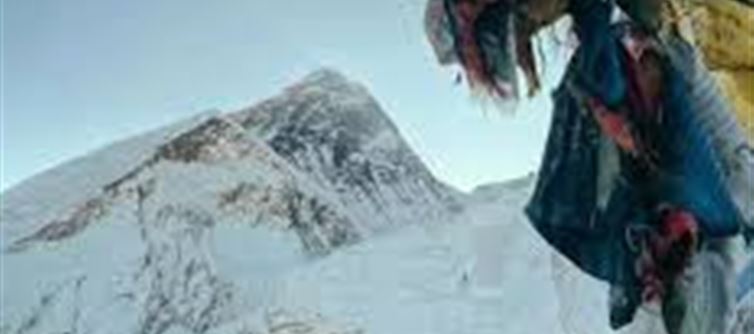Pushpa Telugu Movie Review, Rating
పుష్ప తెలుగు సినిమా రివ్యూ ,రేటింగ్
-
Samantha Drops A Visual Bombshell- Loose Shirt, Visible Thighs & Mystery Vibes
-
Rashmika Mandanna’s Ultimate Style Moment - The Saree Look That Just Broke the Internet
-
Firecracker Causes Car Fire: Will Insurance Cover It? Here’s What You Must Know
-
PF Withdrawal From ATMs: Big Update for Employees, Starting This Month
-
Amrit Bharat Trains From Bihar: Routes, Timings, and Fares You Need to Know
-
BEL Recruitment 2025: Over 600 Vacancies Announced – Salary, Eligibility & Application Process
-
Do Indians and Americans Earn Different Salaries in the USA? Here’s the Reality
-
AIBE 20 Registration 2025: Apply Now for Your License to Practice Law
-
Communication Skills: Simple Tricks to Speak Confidently Without Hesitation
-
Second-Hand iPhones in India: Why Are People Going Crazy for Used Apple Devices?
-
MP Police Vacancy 2025: Recruitment for 7,500 Constable Posts Announced – Apply Now!
-
Police Constable Recruitment 2025: 7,565 Vacancies Open in Delhi Police, LMV License Holders Get Edge
-
AIIMS Vacancy 2025: Faculty Jobs at AIIMS Gorakhpur With Salary Up to ₹2.20 Lakh
-
Railway Vacancy 2025: 1,149 Posts Announced in ECR Recruitment, No Exam Required
-
BSSC Vacancy 2025: Now 23,175 Jobs for 12th Pass as 10,976 New Posts Added
-
SSC CGL 2025: Re-Exam on October 14, Answer Key Date Also Announced
-
Smart Invest: No Lump Sum Needed! Here’s the Smarter Way to Invest in Gold
-
Why is 30 September 2025 famous?
-
Samantha Ruth Prabhu Jobless in Telugu?
-
Kajal Aggarwal Redefines Timeless Glamour in Black Floral Elegance
-
Sudden Craze, Endless Limelight: What’s Behind Rukmini Vasanth’s Hype?
-
Glamour on Hold: Rukmini’s Chennai Fans Miss Out Due to Stampede Fallout
-
Can Rukmini Vasanth Save Kantara Chapter One?
-
What is the festival of September 30 2025
-
AI Could End 1.4 Billion Jobs by 2030: OpenAI CEO Sam Altman
-
India to Launch e-Observer System for Remote Monitoring of Fishing
-
Want to Revive Your New Year Resolution for Good Health? Here’s How!
-
Top 5 Monsoon Fruits for Immunity and Wellness
-
Why Classrooms Will Vanish by 2050 - India’s Schools Need a Wake-Up Call
-
Arattai: The Indian Messaging App Taking on WhatsApp & Meta
-
MRPL Wins Karnataka Best Employer Brand Award 2025
-
100% Tariff on Movies Made Outside US: The Global Film Industry Is Shaken
-
How India’s PM Became a Copy-Paste Leader - How Modi Turned India into a Social Media Puppet
-
How the PM’s Priorities Reveal a Disconnect With India - 0 Tweets for Crisis, 100 for Sports
-
How BJP Shields Vijay from Arrest? Y-Category Security Explained
-
How Freebie Schemes End Up Funding Alcohol, Not Families - The Great Indian Freebie Fraud
-
How Garba Became a Tinder Festival - Morning God, Evening Pleasure
-
How BJP’s Dynasty Now Runs Indian Cricket - BCCI means BJP Controls Cricket in India !?!
-
In Any Other Country He’d Be in Jail – In India, Vijay Gets Police Protection
-
Even China Mourns Karur – But Vijay Hides Like a Coward
-
Vijay’s Disgusting PR Game Exposed - Pathetic PR Circus After 41 Innocent Deaths
-
Savukku Shankar’s Shocking Remark: ‘41 Deaths Are Good for Vijay’ – The Dangerous New Low of Tamil Nadu Politics
-
Deleted But Not Forgotten: Aadhav Arjuna’s Gen Z Violence Call That Shook Tamil Nadu
-
Ranbir Kapoor on Sanjay Leela Bhansali ..
-
Azim Premji Scholarship 2025: Last Date to Apply is September 30 – Check All Details Here
-
Vivo V60e 5G Price Leaked on Flipkart: All You Need to Know
-
India’s Navratri Spending Spree: Key Trends Powering a ₹1.2 Lakh Crore Festive Boom
-
MCC NEET UG Counselling 2025: Round 3 Registration Begins – Everything You Need to Know
-
Navratri Saptami 2025: Devotees Worship Mahagauri in Varanasi with Unmatched Devotion
-
West Bengal Teacher Recruitment 2025: 13,421 Vacancies Announced – Check Details Here!
-
Greek Yogurt vs Regular Yogurt: Which One Is Healthier?
-
Sreeleela Proves Less Is More in Stunning Off-Shoulder Ensemble
-
Kajal Aggarwal Turns Heads in Denim Chic - Denim Never Looked So Glamorous
-
Pooja Hegde Invests Big, Lives Bigger
-
Samantha Slays in Minimal Accessories and Maximum Glamour - Corset, Curves, and Calm Confidence
-
Bhagyashri’s Old-Hollywood Glam Will Leave You Spellbound
-
IIT Fees Soar 177% - The Silent Burden on India’s Brightest Mind
-
How a 2-Year-Old Child Died in Vijay’s Fan Frenzy - Karur Massacre Through a Family’s Eyes
-
Why Supporting Vijay Now Makes You an Accomplice - Photos of the Fallen Angels
-
ARREST VIJAY - Vijay, The Modern-Day Hitler of Tamil Nadu? Citizens Demand Justice
-
Eye Witnesses Reveal How Vijay Turned Devotion into Death
-
Trisha’s Controversial Take on Karur Tragedy? Blame the Crowd, Not Vijay
-
Video Proof of Vijay’s Callousness - Vijay Prioritizing PR Over Human Lives at Karur Stampede
-
Vijay, the Blood-Sucking Monster Hiding Behind Social Media Hype - From Massacre to Hashtag
-
India Slams Pakistan on Field, But the Asia Cup Stage Was a Propaganda Circus
-
SBI Card and IndiGo Launch Dual-Network Co-Branded Credit Cards: Features and Benefits Explained
-
When Gujjus Became Human Props for Modi’s Ego Parade - Dignity Crushed
-
While Students Protest, Votes Are Stolen, and Papers Leak—Modi Wants You to Celebrate Cricket
-
Shameful! Why India Is Punishing Disabled Children With an 18% Tax on Hearing Devices
-
Death Threats on Live TV: How BJP Just Declared War on Indian Democracy
-
How Vijay Fans Became Cheerleaders for Death - Why Every #WeStandWithVijay Fan Is Complicit in Mass Murder
-
Kuldeep’s Carnage, Tilak’s Calm, Dube’s Ruthlessness – India Script a Classic in Asia Cup Final
Empowering 140+ Indians within and abroad with entertainment, infotainment, credible, independent, issue based journalism oriented latest updates on politics, movies.
India Herald Group of Publishers P LIMITED is MediaTech division of prestigious Kotii Group of Technological Ventures R&D P LIMITED, Which is core purposed to be empowering 760+ crore people across 230+ countries of this wonderful world.
India Herald Group of Publishers P LIMITED is New Generation Online Media Group, which brings wealthy knowledge of information from PRINT media and Candid yet Fluid presentation from electronic media together into digital media space for our users.
With the help of dedicated journalists team of about 450+ years experience; India Herald Group of Publishers Private LIMITED is the first and only true digital online publishing media groups to have such a dedicated team. Dream of empowering over 1300 million Indians across the world to stay connected with their mother land [from Web, Phone, Tablet and other Smart devices] multiplies India Herald Group of Publishers Private LIMITED team energy to bring the best into all our media initiatives such as https://www.indiaherald.com

 This body, called 'Green Boots', is that of ITBP jawan and indian mountaineer Shewang Paljor. He went to conquer Mount Everest with his friends on May 10, 1996. They are said to have successfully climbed the peak and died in a snowstorm on the way back. There is some controversy over his death to this day. Some mountaineers say that Shewang may have survived the snowstorm, but no one helped him. It is said that he and his companions shouted for help, but other mountaineers, eager to succeed, did not consider it necessary to help. His body has been lying there ever since.
This body, called 'Green Boots', is that of ITBP jawan and indian mountaineer Shewang Paljor. He went to conquer Mount Everest with his friends on May 10, 1996. They are said to have successfully climbed the peak and died in a snowstorm on the way back. There is some controversy over his death to this day. Some mountaineers say that Shewang may have survived the snowstorm, but no one helped him. It is said that he and his companions shouted for help, but other mountaineers, eager to succeed, did not consider it necessary to help. His body has been lying there ever since.



 click and follow Indiaherald WhatsApp channel
click and follow Indiaherald WhatsApp channel